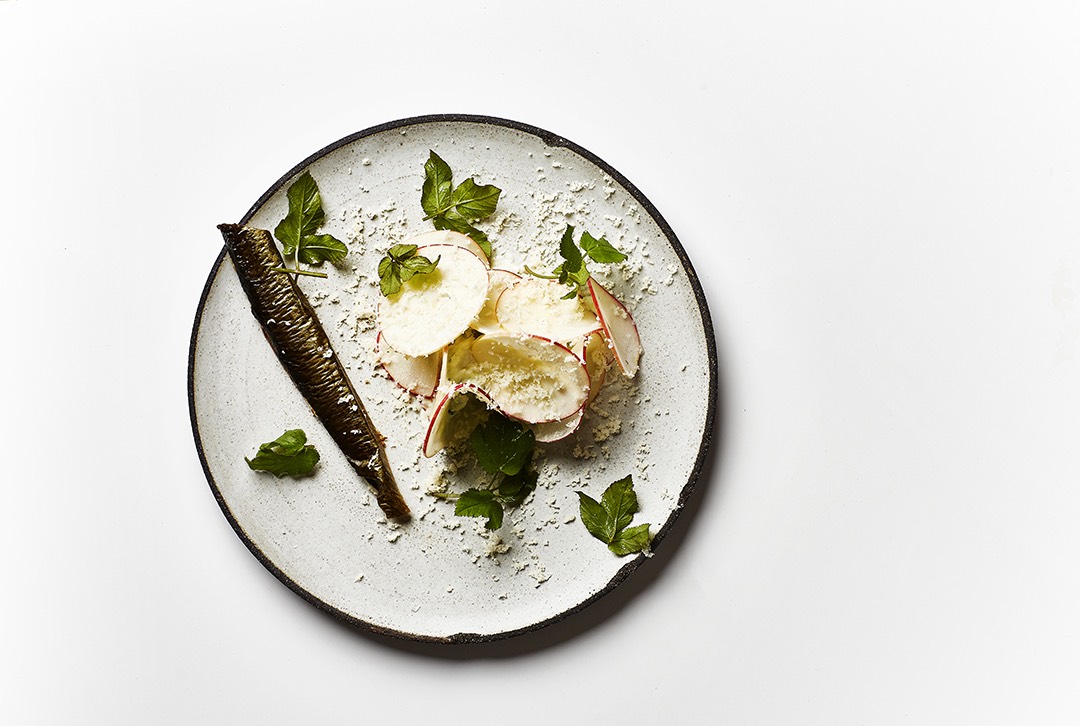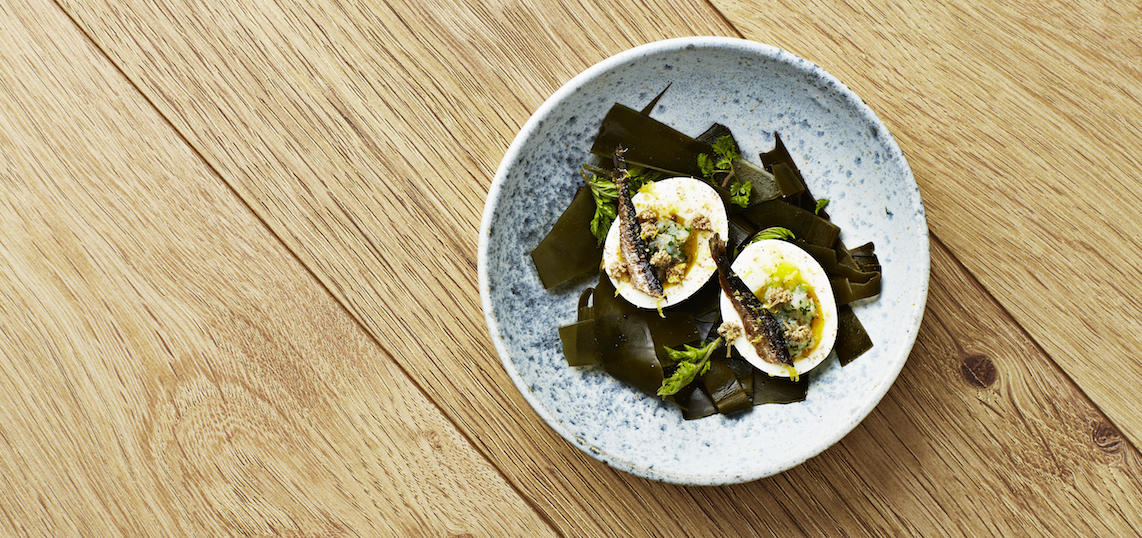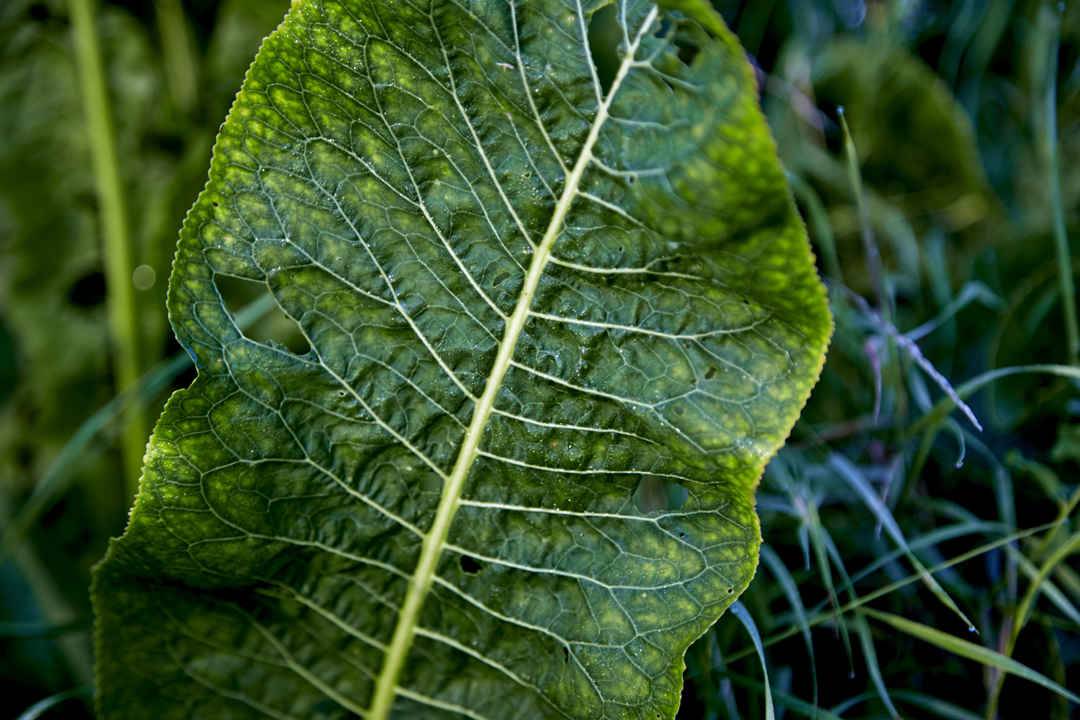
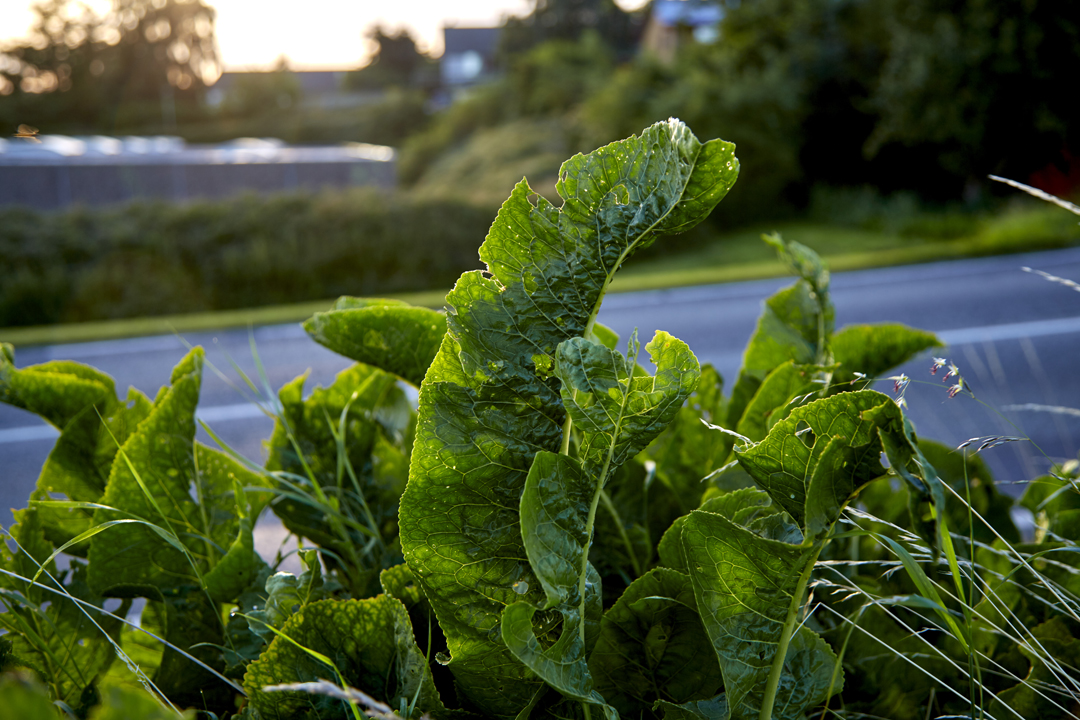
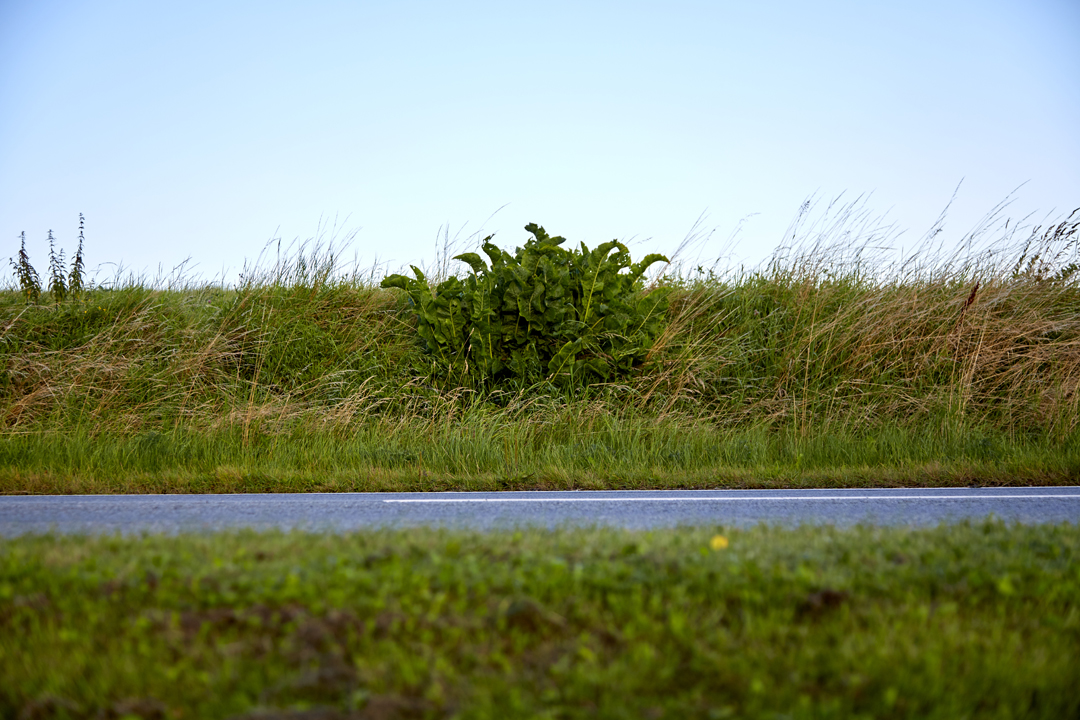
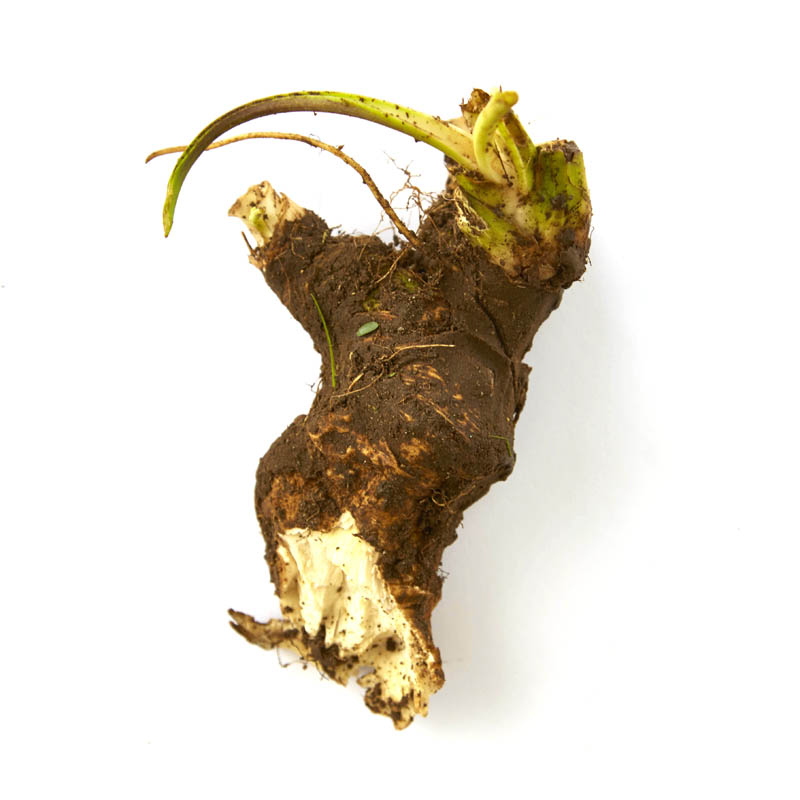
Horseradish
Horseradish is a Scandinavian classic that grows wild in many different landscapes. Once you’ve learned to recognize its wrinkled leaves, you’ll find it easily: it’s a plant that grows abundantly throughout the region.
-
Where to Find It
Horseradish grows everywhere in Denmark, and you’ll find it on lawns, in thickets, in grassy areas along the coast, on roadsides, and on lightly shaded slopes that face north. It can cope with poor soil, but fares best in a moist, nutrient-rich bed. If the soil is good and has plenty of water, the roots—which are the part you want— will spread out broadly.
Salt marshes, towns, hedges, roadsides, grasslands
-
When to Find It
You can harvest horseradish as long as it has leaves (otherwise it's hard to find) and as long as the soil is soft enough to dig in—roughly May to November.
Roots: May, June, July, August, September, October, November.
-
How to Spot It
Horseradish can grow up to a meter tall and has large, oval-shaped leaves that cluster at its root. Dark green and shiny, the leathery leaves have sawtoothed edges and visible ribs radiating from their centers. Twisting around themselves, the leaves often form a rosette pattern; a mature plant can look like a fountain erupting from the ground. The roots of wild horseradish grow deep into the earth, branching out in a tangle. The plant’s flowers are white.
-
How to Pick It
Gathering horseradish requires a good garden shovel or a spade. As you dig around the plant, be careful not to unearth the whole thing or damage large parts of its root system. To ensure supply, you might consider putting a couple pieces back in the ground and covering them with soil. If you do want to harvest an entire root, dig along its contours in the ground. Remember that digging requires permission from the landowner.
Risk of misidentifying the plant
There is no risk of mistaking the plant for another dangerous or undesirable plant.


